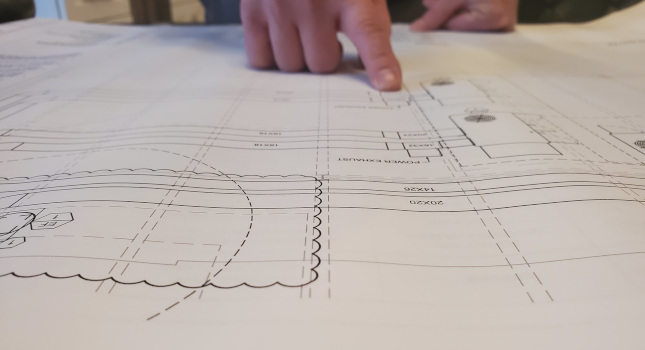
It is not a secret to anyone within the healthcare industry that infrastructure at our facilities is aging at a rapid pace and requires more upgrades than ever before. Unfortunately, this trend is projected to grow according to Age of Plant (AoP) and Facility Condition Index (FCI) data. For example, AoP (more value indicates an older plant) was 8.6 in 1994, 9.8-9.96 in 2004 and 10.78-11.48 in 2015 according to a 2017 study conducted by the American Society for Health Care Engineering (ASHE). While the ideal range for FCI (cost of repairing/cost of replacing) for hospitals/surgery centers is 0.05 and 0.1 for medical office buildings/clinics, surveys show that many facilities are approaching or exceeding the 0.15 cutoff that indicates that infrastructure has exceeded its useful life.
More funding is needed to address this issue as evidenced by a 2020 survey of 60 healthcare chief financial officers (CFOs) by the Deloitte Center for Health Solutions. Financial viability and planning were the biggest concerns for 47% of health system CFOs and 53% of health plan CFOs. Fifty-three percent of all respondents worryingly expected to reduce capital spending on new building assets.
Furthermore, old infrastructure cannot keep up with new building codes for building systems. New regulations typically increase requirements for air changes in spaces that existing HVAC systems simply cannot meet. Generators and emergency power panels are also usually not adequately equipped for new ordinances. And as information technology (IT) infrastructure continues to become more necessary, antiquated facilities that were designed before modern technology are disadvantaged as they lack the capacity to accommodate the latest and greatest innovations. These challenging circumstances are being worsened by inflation, supply chain issues and the diversion of resources toward upgrades needed to combat COVID-19.
Strategies to Address the Issues
We need to better understand the problem to solve it. The following strategies can be adopted by healthcare facilities to identify the specific renovations and improvements needed to address infrastructure shortfalls:
- Facility condition assessment and asset management plan – A facility condition assessment is a detailed analysis that examines the systems and components of a building and is often performed by architects, engineers, and skilled technicians. It involves assessing expected service life by determining whether age is impacting performance or reliability, whether systems meet current code, how systems are impacting energy performance, etc. A budget is often outlined based on the constructability and feasibility of any recommended upgrades.
- Prioritize infrastructure upgrades and maintenance needs – Every facility has unique priorities based on their mission, but there are a few basic strategies to consider when establishing a game plan to ensure the best use of the funds available. The first and highest priority should be to address code and compliance issues, including anything related to life safety. The general operations cost (e.g., energy, asset operation, administration, etc.) should be accounted for to keep the facility operational during such crucial upgrades. Once these items are addressed, other replacements can be planned.
- Identify the risks – Risks need to be identified very early before kickstarting improvement projects. If temporary shutdowns are needed, there should be a clear understanding of which departments will be impacted and the risks posed by the disruption. If temporary equipment/facilities will be required, they will need to be accounted for very early in the process, especially if they will tie into existing systems.
- Assess upgrade options – Determining how infrastructure upgrades will be funded is key. Projects can be planned under a variety of maintenance programs:
- Planned Replacement – This is the best way to handle upgrades as it provides facilities with more control over timing, allowing them to minimize the impact to services by selecting the most ideal schedule.
- Preventive maintenance – The maintenance of assets is planned and done preemptively, which increases equipment life and avoids sudden shutdowns and the costs related to emergency servicing.
- Deferred maintenance – Maintenance is postponed to the future, usually because funding for planned and preventive maintenance is not available. Every facility has some deferred maintenance, but this can sometimes quickly snowball to costly emergency maintenance.
- Emergency maintenance – This is never desired but is necessary when assets abruptly break down and need to be immediately fixed for a facility to remain operational. While it isn’t completely avoidable, emergency maintenance should be minimized through proper planning given its high cost and considerable disruption.
- Capital improvement master planning – While facilities directors understand the benefits of these upgrades, they cannot implement enhancements on their own. So, a proper capital improvement master plan is needed to secure buy in from executives and other key stakeholders. Below are some things to think about when master planning infrastructure upgrades for a facility:
- Explain the risk and rewards of the plan to management or the board so they are equipped to make the best decision for the facility.
- Consider long-term operational and financial objectives, not short-term goals.
- Consider energy efficiency, sustainability, innovation, and carbon footprint reduction goals.
- Plan based on real needs, not based on some specific interest from a group (like physicians or donors).
- Consider future development and how it will affect operations. Developments such as outpatient care moving to a lower cost off-campus setting or the growth of behavioral health or telehealth services will be sure to have an impact.
Henderson Engineers is a CFE Media content partner.
Original content can be found at Henderson Engineers.
The post "Healthcare’s aging infrastructure problem" appeared first on Consulting-Specifying Engineer








0 Comments